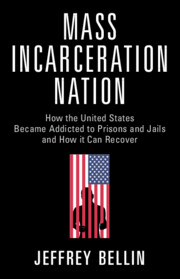 Mass Incarceration Nation
Mass Incarceration Nation Book contents
Part III - The Mechanics of Mass Incarceration
Published online by Cambridge University Press: 03 November 2022
Summary
The way that prisons fill can be depicted with an analogy. Imagine a road that leads to prison, the “prison road.” The police divert people who are traveling on other roads onto the prison road. Between this police-controlled entry ramp and prison are a variety of off-ramps. The first off-ramp is controlled by prosecutors who can decline to prosecute, diverting people off the prison road. Another off-ramp is operated by grand juries who can decline to indict or trial juries who can vote to acquit. A large off-ramp is operated by judges who can dismiss cases or impose noncustodial sentences. On the other side of prison are additional ramps operated by parole boards, who can shrink the prison population by ordering early release (or expand it via parole revocations), and governors who can do the same through clemency. This whole enterprise – the road, the prison, and the on- and off-ramps – is designed and funded by legislators.
- Type
- Chapter
- Information
- Mass Incarceration NationHow the United States Became Addicted to Prisons and Jails and How It Can Recover, pp. 93 - 162Publisher: Cambridge University PressPrint publication year: 2022


